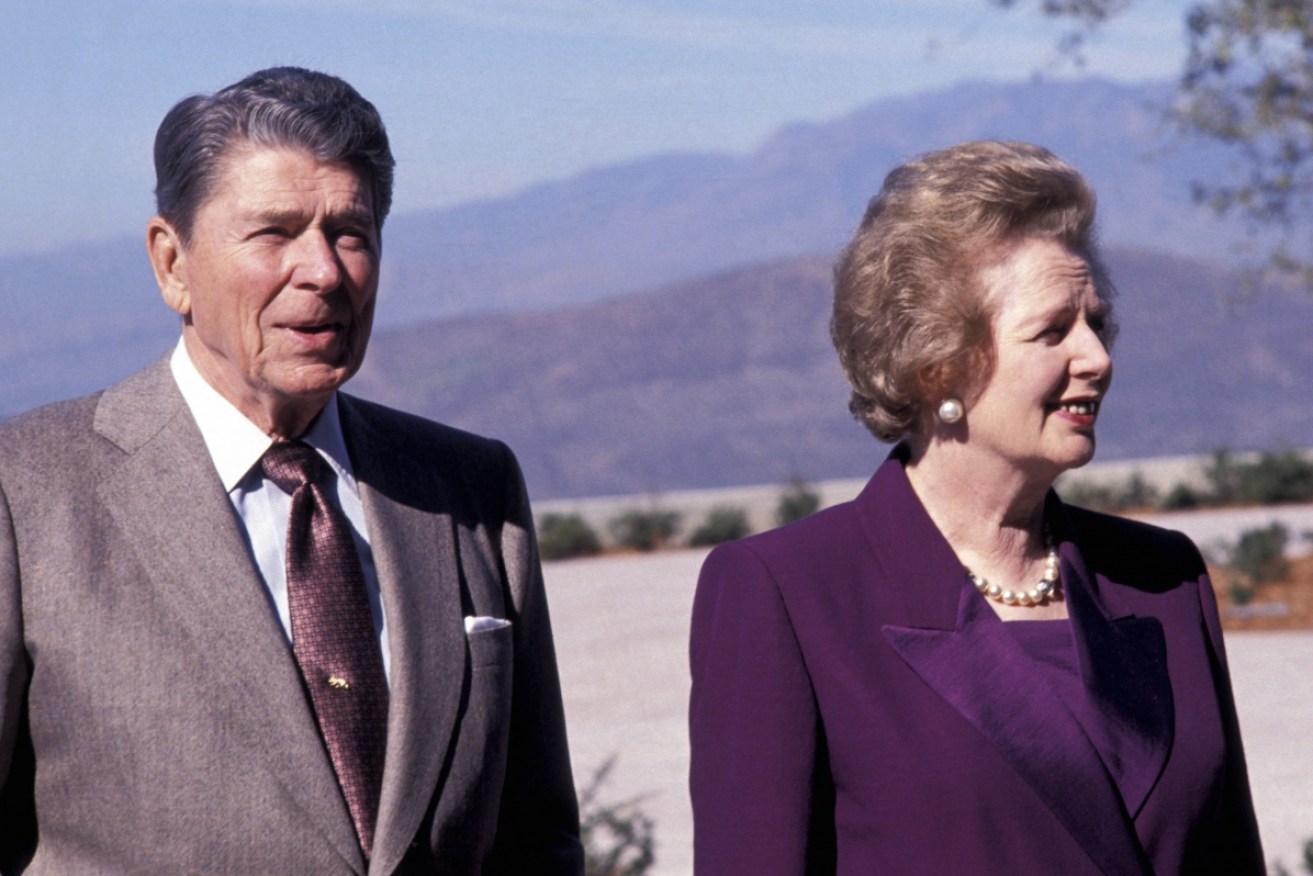How the cost of money is headed back to 1981


The 1980s reforms of Ronald Reagan and Margaret Thatcher came just as inflation had been 'tamed' by central banks. Photo: Getty
A lot of people are too young to remember how things were in 1981, but that’s how far back we have to go to understand the seismic shift taking place into today’s financial markets.
That was the year the scourge of 1970s inflation was ‘tamed’ by central banks, the beginning of an extended period of falling borrowing costs in global bond markets, and the beginning of the economic experiments of Ronald Reagan and Margaret Thatcher.
Despite some wild ups and downs, borrowing costs tracked lower for so long that many people thought they’d never rise again – though that’s exactly what’s happening.
The yield on benchmark US 10-year Treasury bonds has just hit a three-year high of 2.7 per cent, with many pundits expecting that rate to keep climbing.
If it does, there will be all kinds of fallout, though for the sake of simplicity let’s just start with the obvious one – Australian banks are big borrowers in overseas markets, and as the cost of borrowing rises so will the interest rates they charge their customers.
That will tighten budgets even more in heavily indebted households, but similar pressure will be felt by governments trying to finance their budget deficits, and companies trying to finance their investments.
In short, the reversal of the long decline in borrowing costs will hit anyone with debts, and those with large debts hardest of all.
But why?
A bond is really just a loan made by an investor to the government or corporation who has issued the bond.
Investors try to buy bonds at low prices so that when they mature at a set ‘face value’ the investor gets a nice yield – for instance, a $100 bond bought for $95 a year before yields roughly a 5 per cent return for the investor.
Bonds can be traded between the investors holding them, so the same bond could be sold in a moment of panic for just $90, meaning its new owner would make a larger return.
Government bonds are mostly seen as safe places to invest money, because defaults are relatively rare, so there is always investor demand – the question is, at what price.
The trend we have seen in the past 37 years, then, has involved limited supplies of good quality bonds being issued, but very large sums of money looking for a home.
That has gradually pushed up the prices of bonds – which means that the yields paid out at maturity have fallen, and fallen, and fallen.
Now, however, that historic imbalance is turning the other way. There are more and more bonds being issued, but demand for them is not keeping up.
So prices fall, meaning the issuer of the bond has to fund a larger shortfall when they honour the face value of the bond at maturity.
Why was it so cheap?
Those 37 years were a time of growing productivity around the world producing a larger economic surplus that had to be invested – the demographic bulge of wealthy baby boomers was a big part of that.
That pushed up demand for government bonds, but it’s actually the supply side of the equation that is beginning to change in 2018.
Central banks have been buying their own governments’ bonds since the global financial crisis, as a way of stimulating economic activity.
They are now faced with the unhappy task of selling them back into the open market.
The US Federal Reserve has kicked off this process, and within a year or two the European Central Bank and Bank of Japan will follow suit.
Just as they are flooding bond markets with their unwanted holdings, Donald Trump has decided to massively increase US bond issuance – he needs to sell lots of Treasuries to plug the hole in the federal budget caused by his corporate tax cuts.
And so when investment gurus such as Bill Gross declare that we’re entering a bond ‘bear market’ after so many bullish years, they’re talking about structural forces that cannot be undone.
The cost of borrowing, that we’d all got comfortable believing would always be low, is about to start rising for reasons beyond anybody’s control.
That’s going to be shock to everyone – except, perhaps, those who remember how things used to be back in 1981.








